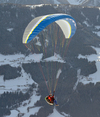Icaro Instinct TE M |
|||||||||||||||||||||||||||||||||||||||||||||||||||||||||||||||||||||||||||||||||||||||||||||||||||||||||||||||||||||||||||||||


|
|||||||||||||||||||||||||||||||||||||||||||||||||||||||||||||||||||||||||||||||||||||||||||||||||||||||||||||||||||||||||||||||
Instability rating |
|||||||||||||||||||||||||||||||||||||||||||||||||||||||||||||||||||||||||||||||||||||||||||||||||||||||||||||||||||||||||||||||
|
|||||||||||||||||||||||||||||||||||||||||||||||||||||||||||||||||||||||||||||||||||||||||||||||||||||||||||||||||||||||||||||||
Glider characteristics |
|||||||||||||||||||||||||||||||||||||||||||||||||||||||||||||||||||||||||||||||||||||||||||||||||||||||||||||||||||||||||||||||
|
Launch preparations: easy
launch characteristics: delayed, delayed climb,needs pronounced guidance, minimal feedback during inflation, little braking required, slows before zenith, control check simple, low takeoff speed
asymmetric collapse: canopy colllapses at high angle to leading edge, moderate dynamics, total course change 180-270°, (3), moderate course change rate, marked forward pitching 60-75°, (4), high height loss 40-49 m, (3), low sink velocity 10-14 m/s, (1), with tendency to cravat, (4), G-Force 2,5- 2,9 G, (2)
Frontal collapse: canopy collapses with high total collapse aera, marked pitch backwards 45-60°, moderate pitch forwards 30-45°, moderate dynamics, course change 90-180°, (3), variable recovery behaviour, at times immediate, at times delayed, automatic recovery, (3), usually symmetric recovery, horseshoe, wingtips at front, immediate return to normal airspeed, very high height loss >50 m, (4), very low sink velocity <10 m/s, (1)
Spiral dives: rapid sink velocity increase, Very high G-Force 4,5-5,0 G, (4), Sink velocity after 720° <18 m/s, (3), High maximum sink velocity < 22 m/s, (3), sink velocity increase < 6 m/s on brake release, (2), Course change 360-540° after spiral exit, (3), moderate height loss during recovery 30-60 m, (2)
B-Stall: normal force required, low pitch backwards <15°, low pitch forwards <15°, stable sink phase, no tendency to deform, immediate return to normal airspeed, 6-8 m/s, height loss on recovery < 20 m
big ears: simple initiation, stable flight phase, immediate automatic recovery, Vsink unaccelerated 2,5-3 m/s, Vsink accelerated 3,5-4 m/s, Vunaccelerated 0-3 km/h less than trimspeed, Vaccelerated 5-8 km/h faster than trimspeed
Steering behaviour: balanced, 70 cm brake travel range, very noticable brake pressure increasse, Late stall point, easily identifiable |
|||||||||||||||||||||||||||||||||||||||||||||||||||||||||||||||||||||||||||||||||||||||||||||||||||||||||||||||||||||||||||||||
Notes |
|||||||||||||||||||||||||||||||||||||||||||||||||||||||||||||||||||||||||||||||||||||||||||||||||||||||||||||||||||||||||||||||
|
Asymmetric Collapse: Testing Icaro's Instinct TE reminded our test pilots of collapsing a tandem glider. Pulling an A-riser causes the entire wing on this side to deform before it finally collapses steeply. The glider can be flown over a wide pitch range and is extremely collapse resistant, but this produces high dynamics when the wing finally collapses. The outer edge of the wing tip (stabiliser) tends to re-inflate on its own, often before the rest of the wing, which can lead to cravats. As with the Tequila4, the Instinct rotates minimally but pitches markedly on a collapse. Front Collapse: Icaro's Instinct TE collapses massively after the high resistance forces are overcome. Re-inflation is generally rapid and on occasion impulsive. As the wing tips often open rapidly, the glider often enters a front horseshoe which then self-recovers but markedly delays the entire recovery. Spiral Dive: Icaro's Instinct TE recovers according to the expectations for the LTF B class. During the spiral dive, marked G-forces of around 5 G were noted. B-Stall: Stable sink phase, low pitching back and forward. Big Ears: Very easy, wingtips stable, no flapping. |
|||||||||||||||||||||||||||||||||||||||||||||||||||||||||||||||||||||||||||||||||||||||||||||||||||||||||||||||||||||||||||||||
Rating |
|||||||||||||||||||||||||||||||||||||||||||||||||||||||||||||||||||||||||||||||||||||||||||||||||||||||||||||||||||||||||||||||
|
Safety class 4 This class of paraglider reacts demandingly to one or more of the following manoeuvres: frontal collapse, asymmetric collapse or spiral dive.Demandingly means that the above manoeuvres result in marked dynamic reactions from the glider and/or large height losses. Advanced piloting skills which need to be regularly practised, together with good personal reaction times are required to safely fly this class of gliders. Basic recovery techniques for ending a manoeuvre are not sufficient to maintain control, reduce height loss to a minimum and prevent subsequent critical reactions. Pilots should be able to recognise the onset of the above manoeuvres and be able to prevent or minimise their effects through immediate and precise pilot inputs. Additional experience such as regular ground handling and SIV training is required to safely fly gliders of this class. Special training or pilot skills which exceed standard training may be required for the safe performance of emergency descent techniques. Gliders of this Safety Class are not suitable for beginners, irregular flyers or low-airtime pilots. |
|||||||||||||||||||||||||||||||||||||||||||||||||||||||||||||||||||||||||||||||||||||||||||||||||||||||||||||||||||||||||||||||

